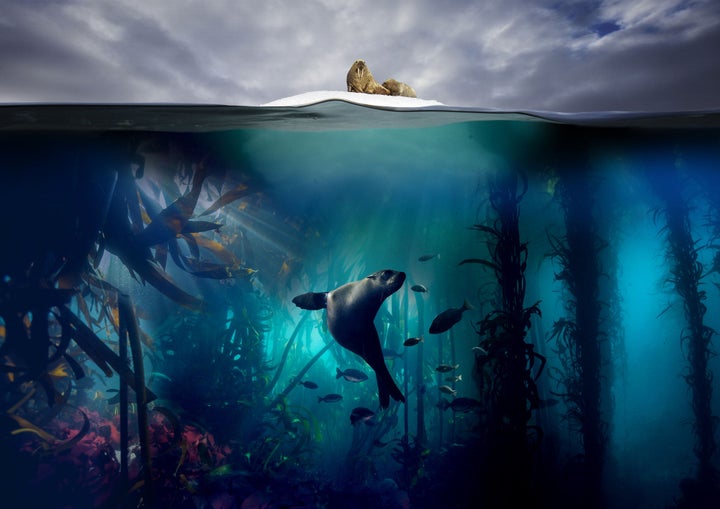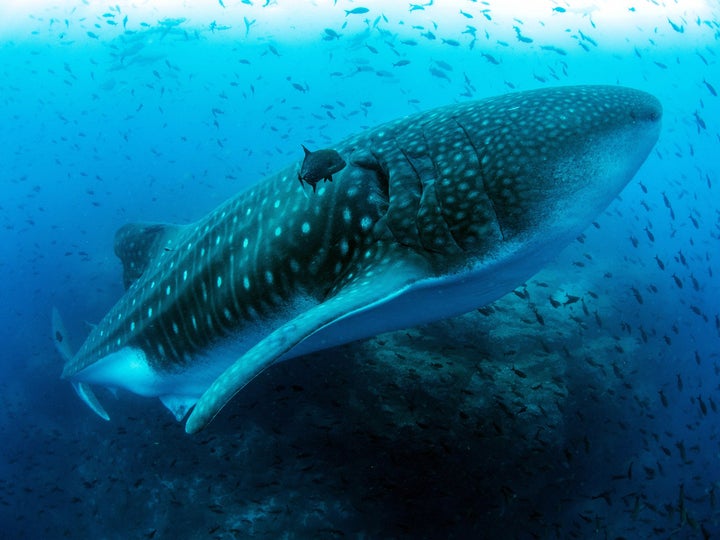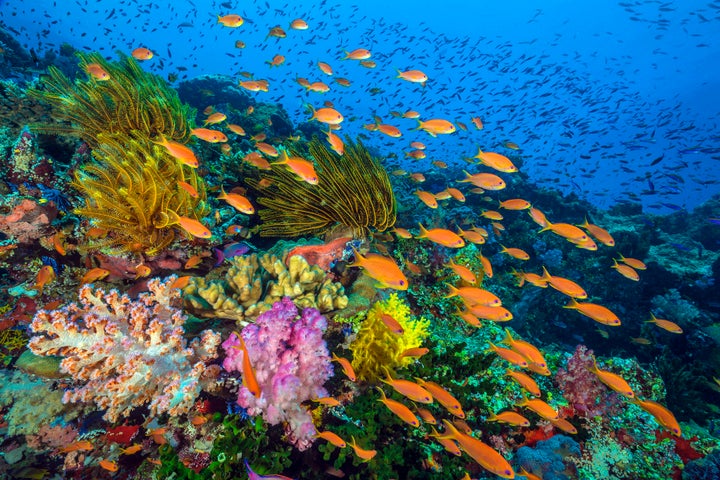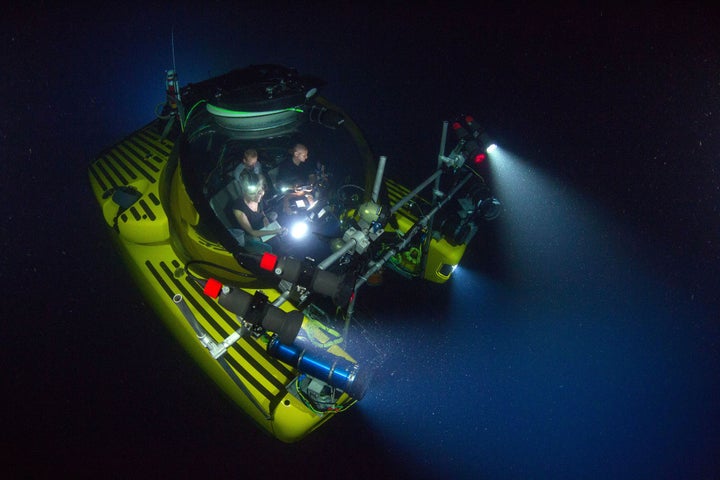‘Blue Planet II’, the sequel to Sir David Attenborough’s 2001 landmark natural history series, premieres on BBC1 on Sunday (29 October).
The landmark seven-part series promises to bring viewers face to face with new creatures and landscapes beneath the waves, using cutting edge new technology.

The facts and figures involved in making the highly-anticipated follow-up to ‘Blue Planet’ are mind-boggling, and the stories the crew has recounted are almost as unbelievable as the discoveries they’ve made.
Prepare to have your mind blown...
1. It took four years to film and produce
That’s a whole presidential term.
2. The logistics involved are colossal
The team mounted 125 expeditions in 39 countries, on every continent, across every ocean. That’s a whole lot of time spent underwater.
3. 6,000 hours to be precise
The crew filmed everywhere from familiar shores to the deepest seas.

4. They went deep
So deep in fact, that the crew uncovered many discoveries new to science.
5. They filmed a sea within a sea
The crew captured a sequence of eels diving in and out of an underwater lake.
6. The crew had lots of new toys to play with
New technology used in the new series includes bubble-less diving equipment that allows the cameramen to swim underneath whales, and light-detection cameras that can capture phosphorescent rays.

7. Some of the creatures caught on camera are straight out of ‘Star Wars’
These include leaping blennies - fish that live almost exclusively on land - and giant trevally that snatch seabirds out of mid-air.
8. The crew spent 1,000 hours in submersibles
All in order to film the ocean’s final frontier - Earth’s ‘inner space’ - the deep.
9. That’s 1,000 metres under the sea
And the maximum depth current technology can go.

10. No one can go to the loo whilst in the deep
So they have to hold it for 10 hours. IN WATER.
11. We still know relatively little about life in our oceans
It’s said we know less about the depths of our own planet than we do the surface of Mars.
12. Only three humans have ever gone deeper underwater than the ‘Blue Planet II’ crew
They are two guys in the 1960′s, Don Walsh and Jacques Piccard, and more recently ‘Titanic’ and ‘Avatar’ director James Cameron.

13. There were some seriously hairy moments
Producer Orla Doherty recounts a particularly scary incident that took place as they filmed in the deep. She explains: “We noticed water gathering in the bottom [of the sub]. We were 450 metres deep, so it was 45 minutes back up to the surface. All sorts of things go through your mind – there’s a giant crack and it’s just going to go. There isn’t a way out. There’s no happy ending.
“It took 20 minutes to figure out where the water was coming from, and how to stop it getting in. That was an exciting 20 minutes. The pilot noticed one of the inlets on a pressure gauge wasn’t quite watertight. So it was a seep, not a crack or hole that could rupture, and it was just a case of sealing it off.
“The pilot asked if I wanted to go straight back to the surface now and I said ‘No, let’s stay down and get on with our day’s work!’ Every single dive into the deep is a precious thing.”
14. Never underestimate an ocean-dwelling creature.
In the opening episode, a little tuskfish picks up a clam in its mouth and proceeds to smash it open on a special clam-opening divot that it has found in a piece of coral. In other words, it uses a tool.
15. Whales and dolphins have an annual get-together
One sequence captures the moment an enormous pod of false killer whales come upon a similarly enormous pod of bottlenose dolphins, and have a good old catch-up. They speak in dolphin language, hang out and catch fish. Apparently they do this every year.

16. There were lots of ‘firsts’
Like capturing two-metre long Humboldt squid on the attack. During filming the crew was surrounded by a thousand of the fierce, voracious predators. So fierce in fact, that they actually turn on each other and become cannibals if there’s not enough food.
17. Things sometimes got way too close for comfort
A similar incident happened with 50 walrus. Just two metres away from the crew, the team was forced to sit dead still, but that didn’t stop one of the animals from rearing up and tusked with full force.
Luckily the cameraman managed to move the kit with lightning speed but the tusks still caught the side of the camera leaving two perfect tusk-like dents. Brrrrrr.
18. The ocean can be bloody dangerous
One cameraman was stung by a stonefish while we were filming the Reefs episode. After putting his finger into the sand to steady himself, he ended up with a tiny prick of blood on the end of his fingertip.
Producer Jonathan Smith explains: “That was it. We had to get out as fast as we could. I’ve never seen anyone in so much pain so quickly in my life. Luckily we were only 10 metres down.
“Again luckily, we had boiling water on our boat and we knew their poison is protein-based, so we had to get heat on it as soon as possible – as hot as he could handle for as long as possible. Even with that ‘instant remedy’, his finger was black for weeks. Talk about suffering for your art.
‘Blue Planet II’ begins Sunday, 29 October at 9pm on BBC One
